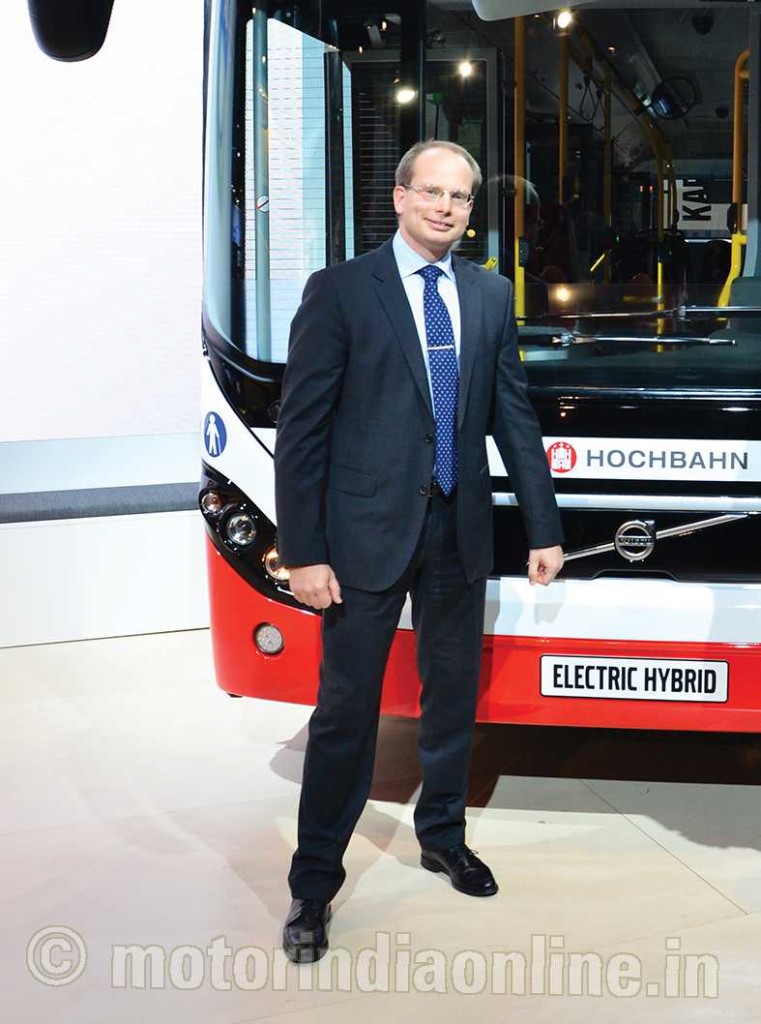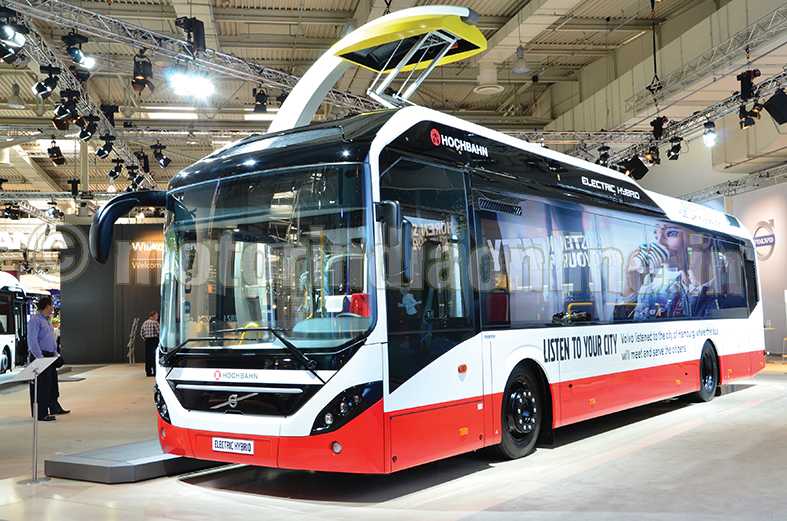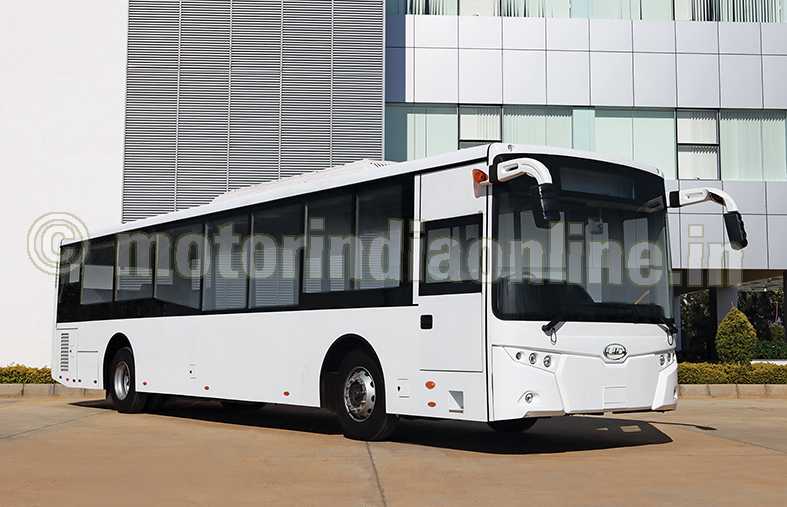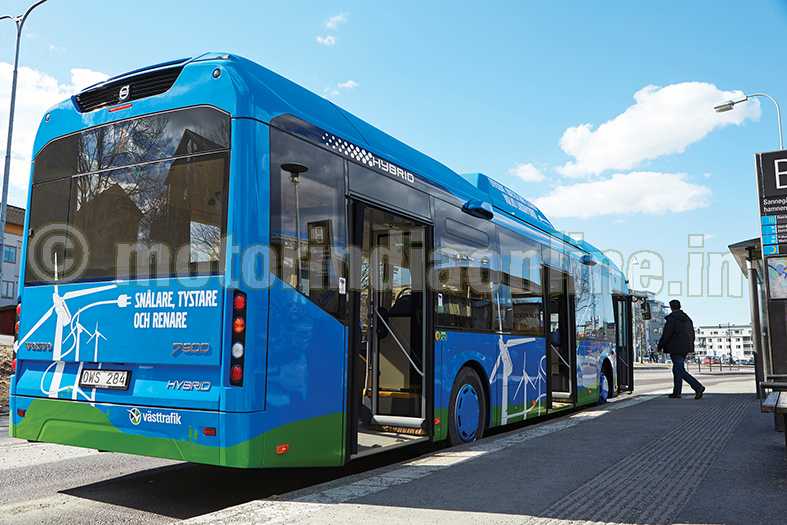Volvo Buses, the global leader in electric and hybrid mobility solutions, officially launched the Volvo 7900 Electric Hybrid at the IAA Commercial Vehicles show. Silent, cleaner and with significantly lower fuel consumption, it represents a new generation of public transportation solutions. Volvo has already signed contracts with several European cities for the first deliveries.
Volvo Buses is taking the next step in electrification with the launch of the Volvo 7900 Electric Hybrid. Its plug-in technology reduces fuel consumption and carbon dioxide by up to 75 per cent, compared to a conventional diesel bus. Total energy consumption is reduced by 60 per cent.
“I am very proud to launch this ground-breaking bus system. Electric-hybrid buses and full-electric buses are tomorrow’s solution for urban public transport. They will allow us to reduce energy consumption, air pollution, climate impact and noise, which are some of the biggest challenges facing large cities worldwide,” said Håkan Agnevall, President, Volvo Bus Corporation.
Noise is a growing problem in many cities. The noise level near a Volvo Electric Hybrid is in the range of normal conversation level. The Volvo 7900 Electric Hybrid runs in electric mode on average 70 per cent of the route, silent and emission-free. The vehicle offers great flexibility in operation. It can run as an electric bus in selected areas, but performs as a hybrid on any route. Charging at end stations takes six minutes. The vehicle also shares the technology of the well-proven Volvo 7900 Hybrid, securing high uptime and availability.

A number of European cities are showing keen interest in Volvo’s Electric Hybrids. Among them are Hamburg, Luxembourg and Stockholm. Series production is scheduled to start in early 2016.
Three Volvo Electric Hybrids have run in a field test in Gothenburg over the past year, a test that has verified the reduction in energy consumption and emissions.
As of this autumn and for two years ahead, eight Volvo Electric Hybrids will be put into regular operation in central Stockholm. This is part of ZeEUS, an EU project being conducted in six European countries.
Volvo Buses introduces ingenious auto brake technology way ahead of legal requirement
Volvo Buses reinforces its safety position by introducing a forward collision warning and emergency braking system. The technology automatically applies full brakes to the bus if a collision with a vehicle in front is imminent and the driver doesn’t react to the initial warning. The solution becomes available on Volvo coaches in 2015.
“Volvo’s Forward Collision Warning and Emergency Braking functionality is an excellent example of our proactive approach to road safety. It is able to perform full braking from normal speed towards standstill objects three years before the legal requirement comes in 2018. The system also handles braking in curves”, says Peter Danielsson, Safety Manager, Volvo Buses.
The technology uses both radar and a camera to detect vehicles in front of the coach. If a collision is imminent, the driver gets both a visual and an audible warning. If the driver doesn’t react to the warning, a pre-brake is activated automatically, followed by full braking power.
The Forward Collision Warning and Emergency Braking functionality is part of the Volvo Driver Support System. It also includes an Adaptive Cruise Control that automatically keeps a set distance to the vehicle in front and a Lane Keeping Support System, which warns the driver if the coach is about to cross a lane marking unintentionally.
Helps avoid accidents
“Available for coaches, the package is designed to help the driver avoid critical situations and accidents. Even in cases when the auto brake technology is unable to avoid a collision, the lowered impact speed helps to mitigate the consequences for the driver and the passengers”, explains Peter Danielsson.
More and more Volvo coaches are specified with three-point safety belts. Volvo invented this groundbreaking safety feature in 1959, and it has saved more lives in traffic than any other solution.
“We are very happy to see that the share of Volvo coaches with three-point belts is rapidly approaching 50 per cent in Europe. Continuing to bring this figure up is an important part of the Volvo Group’s safety vision about zero accidents with our products”, concludes Peter Danielsson.
Interview with Håkan Agnevall, President, Volvo BusesBy R. Natarajan, Managing Editor & Publisher, MOTORINDIA Volvo Buses has now crossed a number of milestones in India. How is the market at present and how do you see things moving forward? As far as the current Indian scenario is concerned, the JnNurm is considered a very important program for us. Until now, in the segment we have been targeting, we have had some great success and have a good position in the city bus program. On the coach side, the Indian economy has had a negative impact on the segment. We hope economic recovery will lead to an uptick in the market. Earlier this year, we had launched our UD bus brand in India to address the value segment and expect good response from customers for this brand. There are a lot of developments at the global level on the electro-mobility front at Volvo. There is also a lot of discussion on alternative fuels in India. How do you expect things to progress in the Indian context? We have launched our fully electric bus globally, but we don’t expect everything to change to electric immediately. It will certainly take a few years for electric buses to grow in number and depends on a number of factors, mainly the kind of infrastructure which is needed. Coming to alternative fuels, we had used a lot of ethanol in Sweden at one point of time and it was extremely popular. Now it’s all gone, because the economy, efficiency of the fuel and distribution chain are not there. Of course, things might be different in India but there are efficiency issues with the fuel. Also, in Sweden, biogas used to be a very popular choice, but cities have moved away from it to more of electro-mobility. How does Volvo plan to address the challenges in making elecro-mobility viable? Volvo Buses has a very distinct strategy, and we believe in it based on our analysis and on what we believe is the most energy efficient and financially viable approach. There are two cornerstones necessary for electro-mobility – one is to have a good electric product offering and the other is the infrastructure. The feedback from the cities we have approached is that they like the technology but do not have the infrastructure in place. They would like Volvo to provide it. So we are providing a complete solution together with our electro-mobility partners ABB and Siemens, some of the strongest players in the world in the infrastructure field. We are now capable of providing cities with a complete solution, including the charging infrastructure. If the city wants to set up the infrastructure by itself, we are fully open to that as well. On the service side, we provide service contracts for customers where we take care of the battery and other aspects. It is in our interest that the switch to electro-mobility happens as fast as possible and so we are very much for the charging stations provided by ABB and Siemens to be used by our competitors as well.
|


